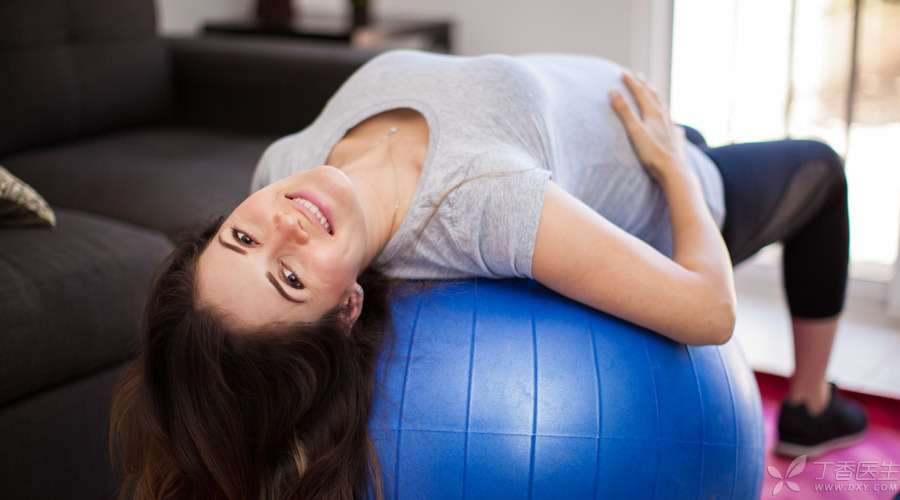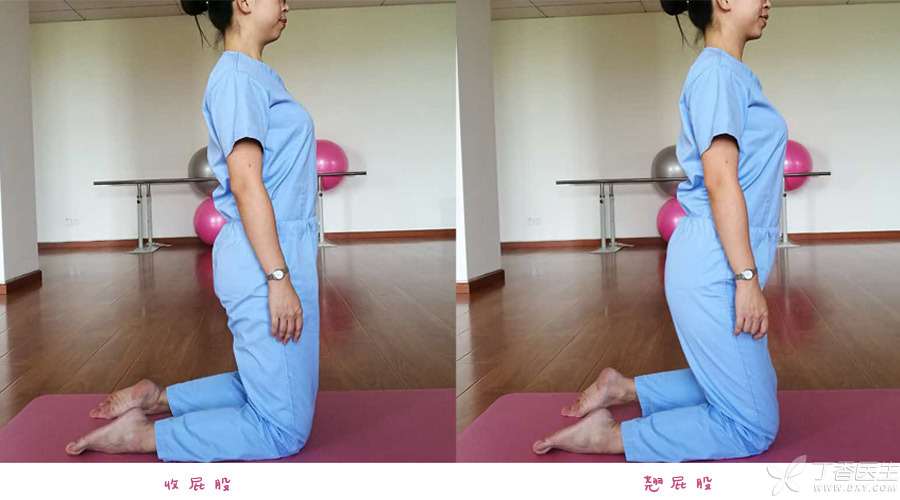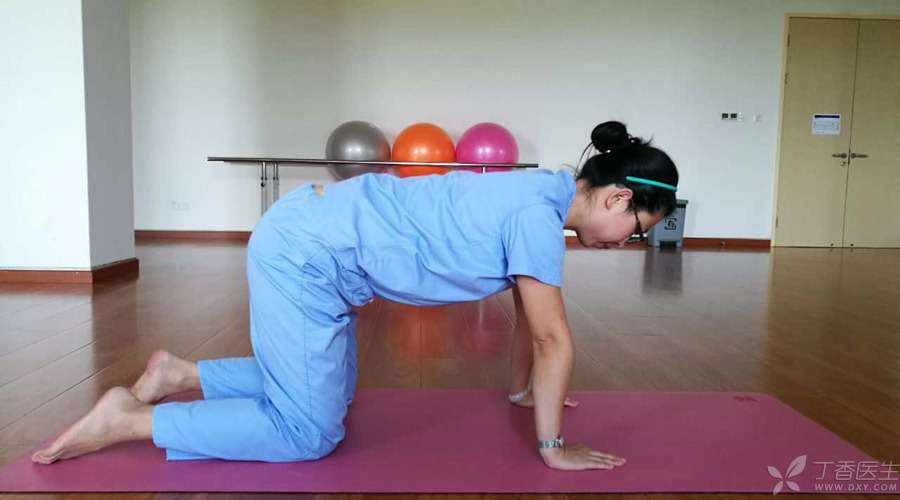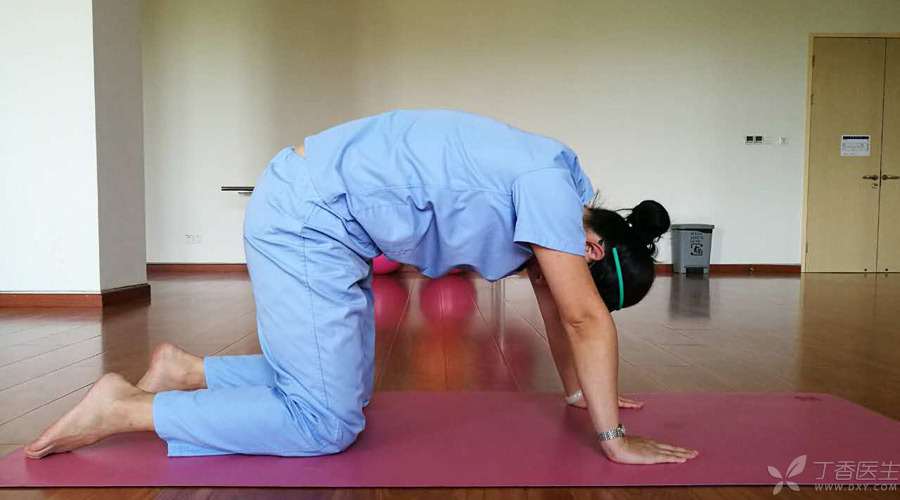
As the belly gets bigger and heavier, the center of gravity of the pregnant mother will gradually move forward when standing. In order to ensure the balance of the body, the spine shape of the pregnant mother will also change.
Specifically, the pregnant mother’s waist will be more forward, her buttocks will be more backward, and her neck will be more forward.
This posture doubles the burden on the muscles directly connected to the spine. At the same time, the growth of the stomach also affects the abdominal muscles, reducing strength and affecting the standing posture.
The joint ligaments of pregnant mothers will become relaxed under the influence of hormones, and the sacroiliac joints and pubic symphysis will also change accordingly, which is beneficial to smooth delivery, but at the same time the ligaments of the waist will also become relaxed, which unfortunately increases the instability of the lumbar spine.
These factors will lead to waist soreness and backache. Generally speaking, mothers’ waist soreness and backache cannot gradually dissipate during the recovery exercise until the goods are unloaded, the uterus retracts and the stomach disappears.
In order to lighten the symptoms of waist soreness and backache, it is very important to use the correct walking posture, standing posture, sitting posture and even lying posture in daily life.
How do I get there?
As the belly becomes rounder and rounder, pregnant mothers will gradually become heavy and their center of gravity will move forward, because the big belly will hinder the leg lifting movement and the pelvic lifting will increase when walking.
This makes pregnant mothers walk a bit like Donald Duck, shaking and swinging, and sometimes they can’t help holding their waist with one hand. These are all normal.
The following suggestions may be useful to you:
-
When walking, remember to keep your shoulders relaxed and be careful not to stooped your upper body.
-
When necessary, you can wear a special waist protection for pregnancy, which has a good foil effect and can relieve low back pain-but don’t expect to be completely immune to pain.
-
Don’t walk too long, you can sit down and rest for a while before continuing.
-
In order to prevent foot pain, if you walk for a long time, you should wear a pair of flat-heeled shoes with good arch support, and the sole should have a certain thickness.
Because, with the weight of the fetus gradually increasing, when the mother walks, the weight on her feet is also increasing. If she walks for a long time and the shoes she wears cannot provide good enough support, it is easy to cause heel pain, plantar fasciitis and other problems. Even, some pregnant mothers may feel the pain of tearing the soles of her feet as soon as her feet fall to the ground.
Pregnant mothers who are accustomed to wearing high heels before pregnancy may not adapt to flat shoes at the beginning, but flat heels are really safer and more comfortable. After a period of adaptation, they will get better slowly.
How should I stand?
Due to spinal changes, pregnant mothers often stretch their heads, chest and buttocks when standing. Pregnant mothers in this posture should not indulge themselves, because the spine will feel tired.
Therefore, the following five aspects should be consciously corrected:
Step 1 Raise your head
Keep a good neck position, the vertical line of earlobe, preferably above the shoulder, and remember to look up.
Step 2 Stand up your breasts
Hold your chest high, relax your shoulders, avoid chest inclusion, and think of putting your head up to the roof.
STEP 3 Don’t pout your ass
Tighten your hips appropriately and remind yourself not to push back.
Step 4 Stand up straight
Don’t tilt your body when standing, let your legs support your weight evenly.
5. Changing Postures
Don’t keep a standing position for too long, you can change it appropriately.
How should I sit?
When sitting in the office or resting, the pregnant mother may leave her waist suspended because she has a propped stomach, which is not good for the lumbar spine at all.
For the sake of health, pregnant mothers should pay close attention to the following aspects.
Step 1 Sit up straight
The buttocks should be close to the back of the chair to ensure integrity. Do not lean to one side and put your head and neck straight.
Step 2 Sit upright
Don’t cross your legs, you can put a small stool at your feet and step on the stool with your feet.
Step 3 Sit flat
When working, keep your body close to the table. If you use a computer, adjust the height of the display screen so that the horizontal center line is flush with the line of sight. Find support for elbows and relax shoulders.
Step 4 Protect your waist
If you are sitting in a rotating seat, do not drive the seat to rotate through the upper body. Accordingly, it is recommended that the lower body should exert force first to drive the whole body to rotate together.
STEP 5 Get Up and Move More
Sit 20 ~ 30 minutes to adjust the posture, can stand up and move for 5 minutes before continuing to work. When the sitting position and standing position are changed, the body moves forward to the front of the chair, and then supports it with leg strength. Try not to lean forward and stand up to avoid excessive waist stress.
How should I lie down?
If you want to say which posture [maintains] the longest in a day, it is really the lying posture. Some pregnant mothers complain that they are going to break their lumbago, or their legs are numb and cramps when they wake up from sleep every day. Does the director of the garden have what’s advice on this?
STEP 1 Don’t lie flat
Pregnant mothers should try not to sleep on their back. It is better to sleep on their side, and it is better to lie on their left.
Not only does lying flat aggravate the posture of lumbago, What’s more, with the increase of gestational age, the baby may press on the inferior vena cava, a large blood vessel in the stomach. This vein mainly transports blood from lower limbs, pelvis and abdomen back to the heart. If it is pressed, it will make it difficult for blood from lower body to flow back, which will increase the burden on the heart and may also reduce the blood supply of placenta.
As for the process of sleep, in fact, there is no need to worry about lying on your back inadvertently, because if you feel uncomfortable, you will adjust your body position.
Step 2 Equip bedding
Pay attention to the height of the pillow, which conforms to the cervical spine curve. There is a wavy pillow, which can provide good support for the cervical spine.
It is advisable to have a hard mattress to support the body well. If a person sinks down, the lumbar spine will be very tired.
Under the condition that the cervical spine and lumbar spine have good support, the cervical spine and lumbar spine can be kept on the same straight line when a person is lying on his side, thus causing the least possibility of pain.
When necessary, it can be equipped with a pregnant woman pillow, U-shaped, L-shaped, etc., which can help the mother to hold the abdomen and waist and relieve the symptoms of lumbago.
These exercises contribute to the health of the spine
Pregnancy is actually not a [illness period], so there is no need to lie in bed all day [rest]. For example, as long as exercise is moderate, it is of great benefit to the body. Here are some exercise methods for everyone.
1. Pelvic movement

- Stand still, put your hands on your waist, Keep your legs apart, Feet and shoulder width. Back tilt buttocks, and then closed buttocks, pay attention to keep shoulders and upper body do not move, only move waist and span. In the process of doing, pay attention to ensure normal breathing at a constant speed, don’t hold your breath. Every tilt and closed buttocks count as once, a group of 10 times or so is appropriate, can do 3 groups or so every day, the specific number, according to the pregnant mother’s physical strength and time arrangement flexible adjustment.
2. Four-point abdominal breathing

- Kneel on the ground with your hands on the ground, the distance is as wide as your shoulders, and let your waist be flat. Keep your lumbar spine parallel to the ground and do abdominal breathing, that is, when you inhale, your stomach bulges up, and when you exhale, your stomach retracts, and try to breathe at a constant speed and smoothly. While breathing, practice Kegel exercise, contract your navel, and keep the contraction for about 5-10 seconds each time. Pay attention not to shake your waist up and down.
3. Cat Sport

- Kneel on the ground, with both hands on the ground, the distance is the same width as the shoulder, and let the waist be flat. Arch the lower back, simulate the cat stretching, keep for 3 ~ 5 seconds, then relax down to close the waist, navel as close to the direction of the ground as possible. Bow waist-close the waist round as once, each group 10 times, can do 3 groups or so every day, the specific number, according to the pregnant mother’s physical strength and time arrangement flexible adjustment.
4. Cervical Exercise
- Sit or stand, Put your head straight. Bow your head, Then the neck is tilted to the left, tilted back, tilted to the right, bowed, Three turns like this, Turn another three turns in the other direction. Bow your head hard for 3-5 seconds, Then look up, Repeat this three times. Raise your head hard for 3-5 seconds, Then put your head straight, Repeat this 3 times. Force the left head for 3-5 seconds, feel the tension of the right muscle, then put your head straight, repeat this 3 times. Force the right head for 3-5 seconds, feel the tension of the left muscle, then put your head straight, repeat this 3 times. Pay attention to whether there is dizziness or other discomfort, if there is discomfort, stop in time. Take preventive measures to ensure that you will not fall down even if you feel dizzy.
Last but not least, please make sure someone is accompanying you during the exercise. If you feel any discomfort, you should stop immediately.
